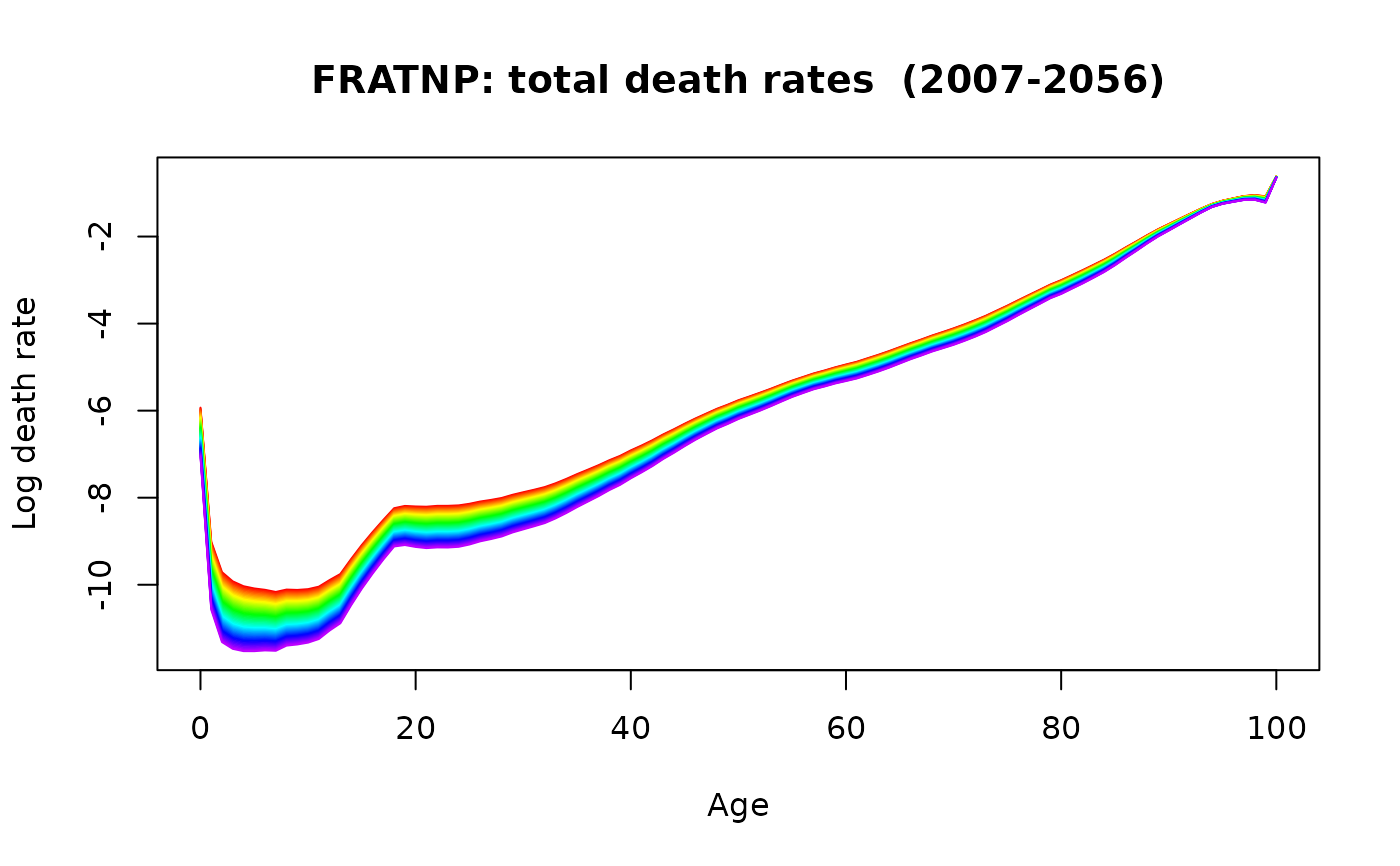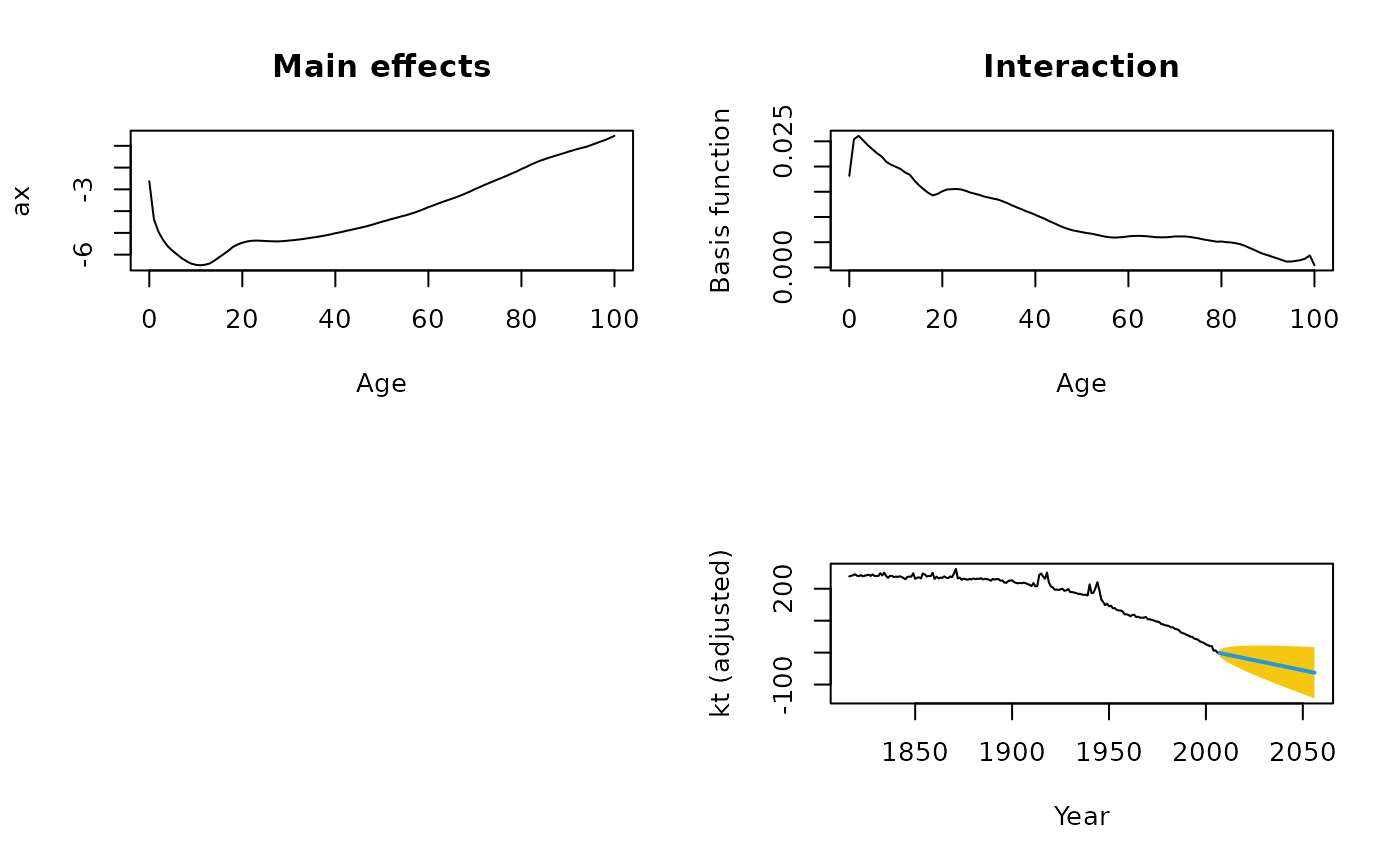The kt coefficients are forecast using a random walk with drift. The forecast coefficients are then multiplied by bx to obtain a forecast demographic rate curve.
Arguments
- object
Output from
lca.- h
Number of years ahead to forecast.
- se
Method used for computation of standard error. Possibilities: “innovdrift” (innovations and drift) and “innovonly” (innovations only).
- jumpchoice
Method used for computation of jumpchoice. Possibilities: “actual” (use actual rates from final year) and “fit” (use fitted rates).
- level
Confidence level for prediction intervals.
- ...
Other arguments.
Value
Object of class fmforecast with the following components:
- label
Region from which the data are taken.
- age
Ages from
object.- year
Years from
object.- rate
List of matrices containing forecasts, lower bound and upper bound of prediction intervals. Point forecast matrix takes the same name as the series that has been forecast.
- fitted
Matrix of one-step forecasts for historical data
Other components included are
- e0
Forecasts of life expectancies (including lower and upper bounds)
- kt.f
Forecasts of coefficients from the model.
- type
Data type.
- model
Details about the fitted model

